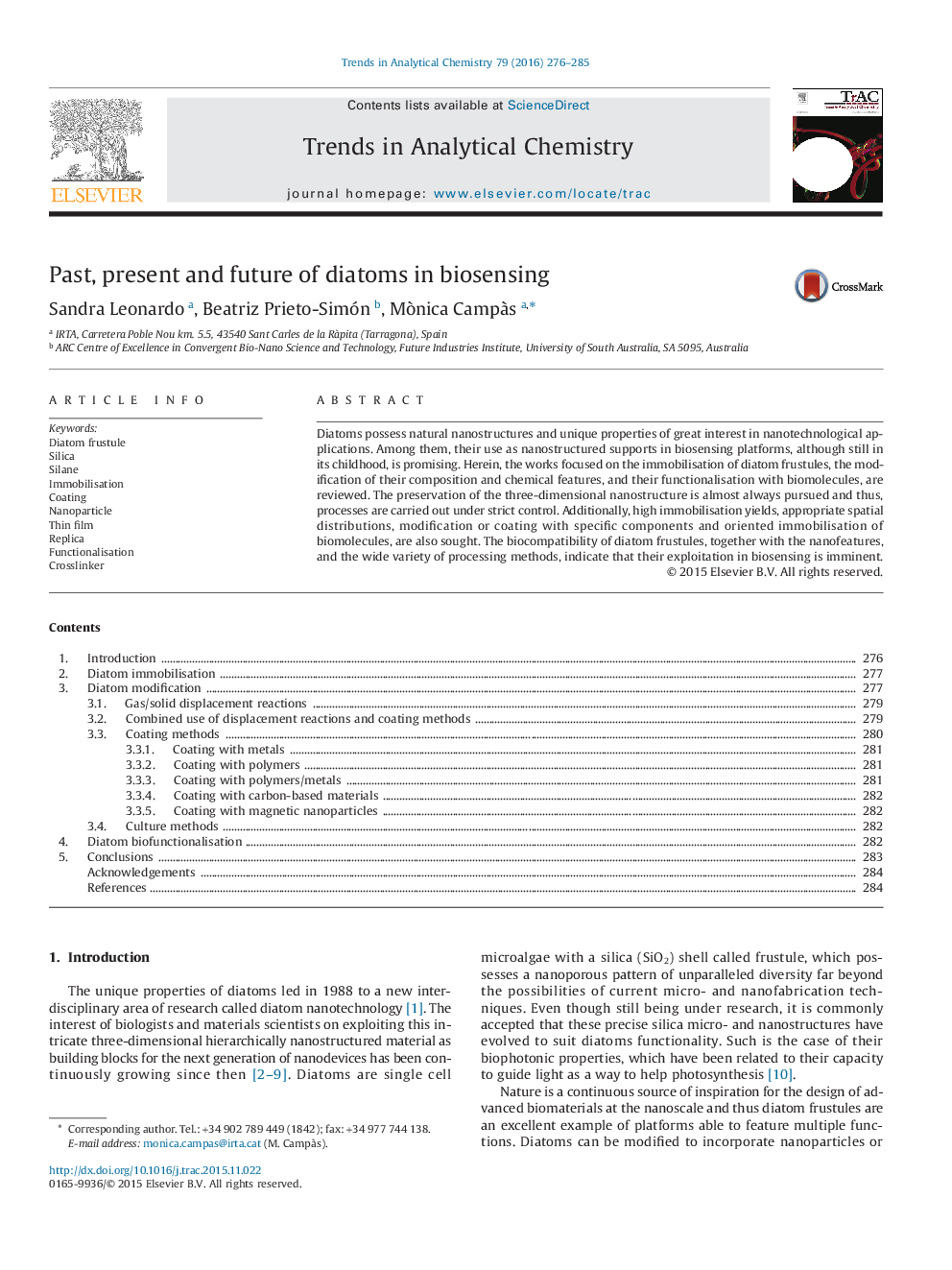| Article ID | Journal | Published Year | Pages | File Type |
|---|---|---|---|---|
| 1248099 | TrAC Trends in Analytical Chemistry | 2016 | 10 Pages |
•Diatoms possess natural 3D nanostructures with great potential in biosensing.•Charge attraction, Si-O-Si bonds and self assembly are used to immobilise diatoms.•Diatoms can be converted into a broad range of materials with attractive features.•Silanisation of diatom frustules allows the easy tethering of biomolecules.•Merging immobilisation, modification and biofunctionalisation of diatoms is pursued.
Diatoms possess natural nanostructures and unique properties of great interest in nanotechnological applications. Among them, their use as nanostructured supports in biosensing platforms, although still in its childhood, is promising. Herein, the works focused on the immobilisation of diatom frustules, the modification of their composition and chemical features, and their functionalisation with biomolecules, are reviewed. The preservation of the three-dimensional nanostructure is almost always pursued and thus, processes are carried out under strict control. Additionally, high immobilisation yields, appropriate spatial distributions, modification or coating with specific components and oriented immobilisation of biomolecules, are also sought. The biocompatibility of diatom frustules, together with the nanofeatures, and the wide variety of processing methods, indicate that their exploitation in biosensing is imminent.
